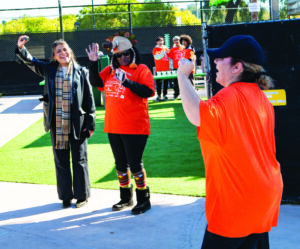
A recent study conducted at the University of Texas at Arlington (UTA) has uncovered a significant cellular pathway that enhances the removal of dying cells, potentially paving the way for improved treatments for autoimmune diseases and advancements in wound healing. Led by Alec Whited, a graduate student in Biology, this research was published in the esteemed journal Genetics and co-authored with fellow researcher Aladin Elkhalil.
Understanding the process of how organisms eliminate dying cells is crucial, as Whited explained. “Similar to taking your garbage out on trash day, living things must also get rid of their unwanted waste,” he stated. “This work helps us understand a specific step in the process of clearing those cells that have completed their job and are no longer needed.” He emphasized that failures in this cellular cleanup can lead to significant health issues.
Linking Cell Clearance to Inflammation
The study highlights a critical relationship between the clearance of dead cells and inflammation, a factor often implicated in autoimmune diseases. When cells die, they release molecules that can instigate inflammatory responses. If these cells are not efficiently removed, the immune system may mistakenly identify these signals as threats, resulting in chronic inflammation.
Whited noted that this mechanism could be particularly relevant for those suffering from autoimmune conditions, where the immune system can become hyperactive. Properly understanding and facilitating the clearance process might lead to new therapeutic strategies aimed at mitigating such responses.
Implications for Wound Healing
The research also has implications for wound healing, an area where cellular dynamics play a pivotal role. One of the genes investigated in the study is linked to cell-to-cell fusion, a vital process in tissue repair. Whited stated, “By better understanding the genetic mechanisms behind this, we hope to identify additional genes that could play a role in improving wound healing.”
This insight could lead to breakthroughs in accelerating recovery from injuries and addressing chronic wounds, although further research is necessary to fully explore these possibilities.
Whited reflected on his experience at UTA, expressing gratitude for the supportive environment fostered within the Department of Biology. “The faculty and students share genuine excitement for research,” he remarked. “There’s a collaborative spirit that drives everyone to push the boundaries of what we know.”
As Whited continues his research career at UT Southwestern, he remains committed to making meaningful contributions to the scientific community. His recent publication serves not only as a personal achievement but also as an encouragement for aspiring scientists to engage deeply in research and collaboration.
The full study, titled “CDH-3/cadherin, YAP-1/YAP, and EGL-44/TEAD promote SYX-2/syntaxin and EFF-1 fusogen-mediated phagosome closure,” is available in Genetics (2025). For more details, visit the journal’s website.







